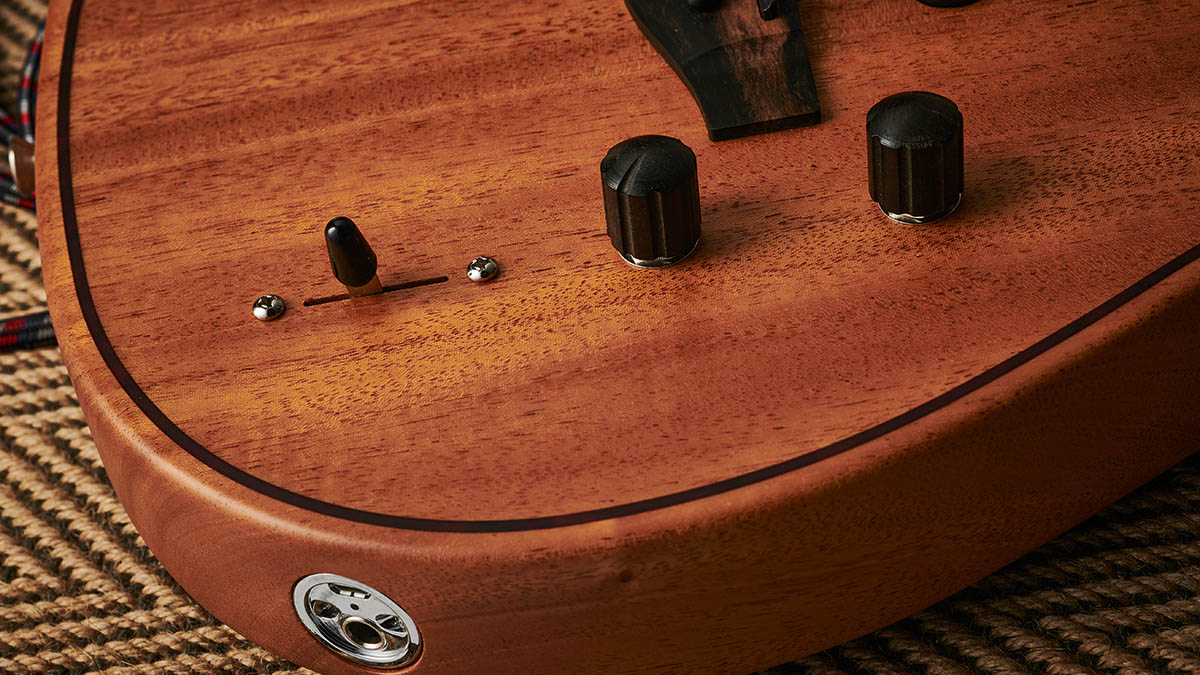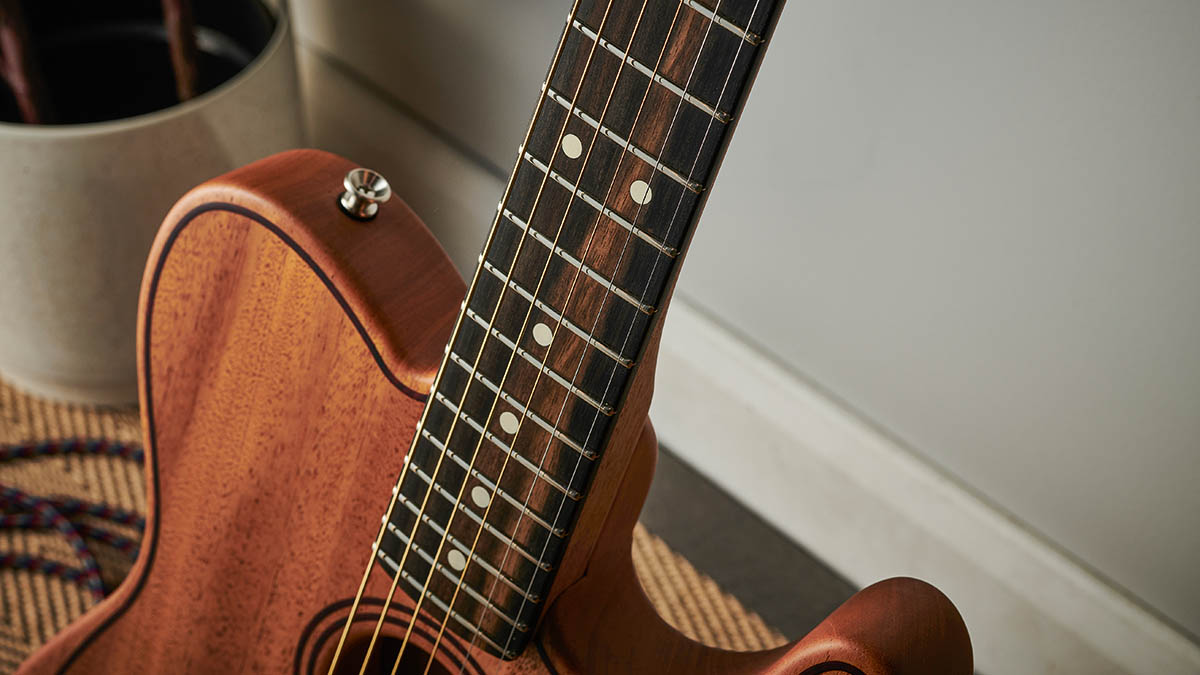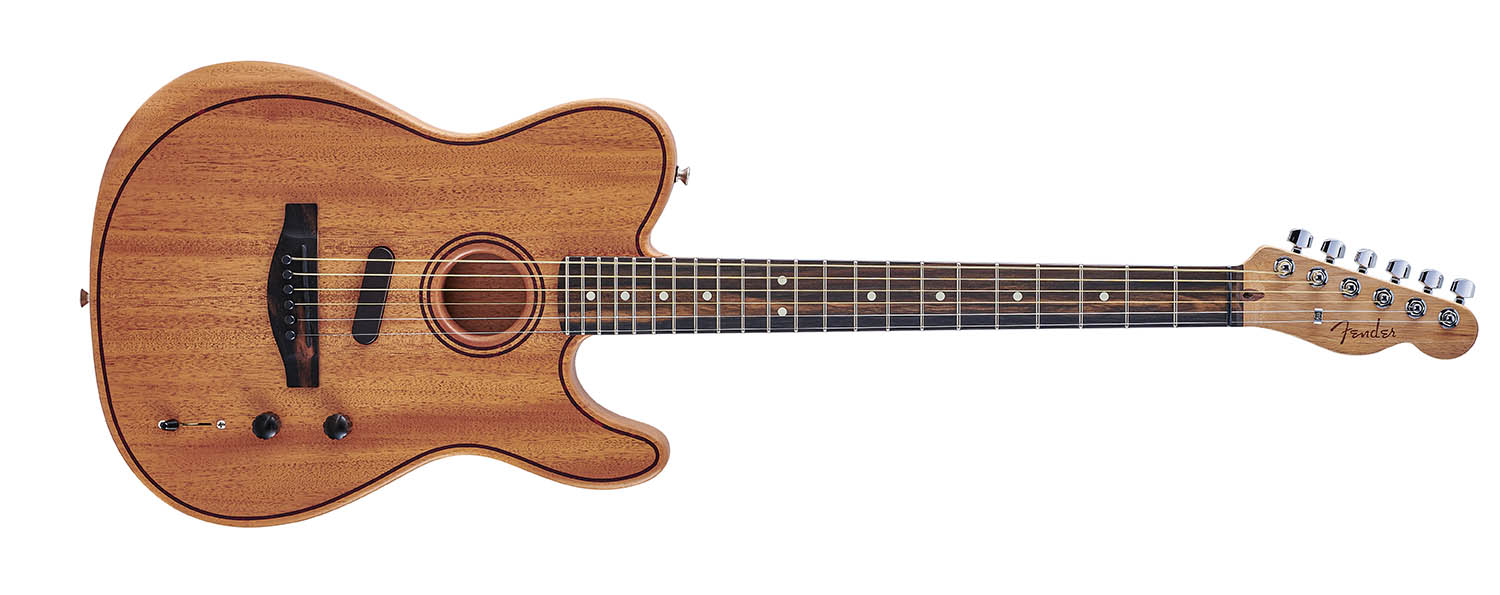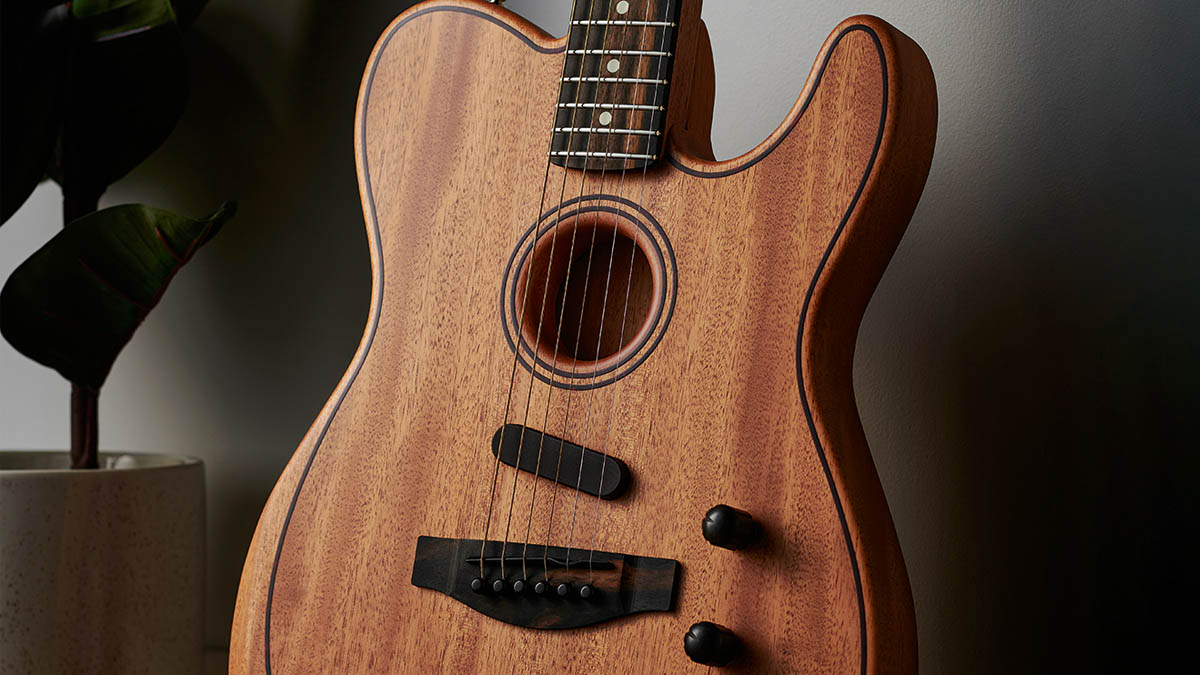Guitar World Verdict
While it all sounds rather good through an acoustic amp or PA, plugging into your electric rig and pedalboard really expands the possibilities for the more creative players out there, and that Sound 2 acoustic/electric mix really blurs the lines. Huge innovation but so simple to use. Have you tried one yet?
Pros
- +
It might be just the top wood that’s different here, but it comes across as a classy addition with subtly different voicing.
- +
A very light weight, sonically inspiring Telecaster!
Cons
- -
Not everyone gets the concept and there’s the shock of the new at play here.
You can trust Guitar World
Typical of a new-design guitar in modern times, Fender’s American Acoustasonic Telecaster had the online world in a right ol’ lather back at its launch at Winter NAMM in 2019.
It remains a polarising guitar, but strong sales have not only increased production space at Fender’s manufacturing HQ in Corona, it has also brought about a string of subsequent models.
Both the Strat and Jazzmaster have received the Acoustasonic treatment, there’s a stripped-down Mexican-made Player version, and Fender seems to be regularly spicing up the range with things such as exotic-wood tops, paisley finishes and, announced earlier this year, an all-mahogany Telecaster and Jazzmaster.
The Acoustasonic is an acoustic guitar, and, although the sound chamber is small, it informs what we hear. In terms of that sound chamber, the Telecaster sits in the middle between the smaller Stratocaster and larger Jazzmaster.

The construction is identical to the original American Acoustasonic Tele, though, here, the inset spruce top is swapped to mahogany – like the back and neck – with simple outline and soundhole striping (which we presume is a paint effect as used on the original models).
The lightly finished body feels almost unfinished; that top is slightly smoother to the touch than the back and sides, and makes for a woody contrast with the darker ebony fingerboard, bridge and knobs.
While the acoustic strings give this Tele a tougher feel than most of our solidbodies, the neck really is very electric in feel, not least the medium jumbo frets. The slightly rounded heel makes upper positions a little more comfortable, too.
All the latest guitar news, interviews, lessons, reviews, deals and more, direct to your inbox!

By design, the acoustic voice is surprisingly full – certainly loud enough for solo practice and sofa noodling. And although the sound engine is the same as the standard spruce-topped version, the acoustic sounds take on a slightly pushier voice, seemingly slightly compressed (in a good way) and more rootsy with it.
Aside from offering some pretty accurate electro-acoustic voices, unlike a standard electro, you have different flavours to instantly choose from. The body sensor can be dialled into the Sitka spruce/Brazilian rosewood dreadnought of Sound 3 to add further realism, plus allow percussive taps of the top to be amplified.
On Sound 2 you can mix that Noiseless bridge magnetic pickup with a Sitka spruce/mahogany dreadnought (one of our favourite sounds), while Sound 1 is just the bridge pickup, but you can add in some light crunch.
Specs

- PRICE: $1,999 / £1,749 (inc gigbag)
- ORIGIN: USA
- TYPE: Single-cutaway, solidbody-sized electro-acoustic
- BODY: Mahogany (hollow) with inset mahogany top
- NECK: Mahogany, modern ‘deep C’ profile, bolt-on
- SCALE LENGTH: 648mm (25.5”)
- TUNERS: Fender standard cast/sealed staggered tuners
- NUT/WIDTH: Graph Tech Black Tusq/43.3mm
- FINGERBOARD: Ebony, ‘clay’ dot markers, 305mm (12”) radius
- FRETS: 22, narrow/tall
- BRIDGE/SPACING: Ebony w/ compensated Black Tusq saddle/52mm
- ELECTRICS: 3-pickup configuration: Fishman under-saddle transducer, bridge plate body sensor, Fender Noiseless N4 magnetic; master volume, mod knob, 5-way voice selector switch; single mono output with USB battery charge
- WEIGHT (kg/lb): 2.23/4.9
- RANGE OPTIONS: The original spruce-topped Tele version is the same price with six colours. Limited runs include Pink and Blue Paisley, and Blue Flower finishes (£1,849), Shell Pink (£1,829). The Mexican-made Acoustasonic Tele (£1,049) is a slightly stripped-down version with fewer sounds. The All-Mahogany Jazzmaster is £1,849
- LEFT-HANDERS: Yes, with spruce top (£1,749)
- FINISHES: Natural (as reviewed), Bourbon Burst – polyester satin matt to body; satin urethane to neck and headstock
- CONTACT: Fender

Dave Burrluck is one of the world’s most experienced guitar journalists, who started writing back in the '80s for International Musician and Recording World, co-founded The Guitar Magazine and has been the Gear Reviews Editor of Guitarist magazine for the past two decades. Along the way, Dave has been the sole author of The PRS Guitar Book and The Player's Guide to Guitar Maintenance as well as contributing to numerous other books on the electric guitar. Dave is an active gigging and recording musician and still finds time to make, repair and mod guitars, not least for Guitarist’s The Mod Squad.

